Sprite (lightning)
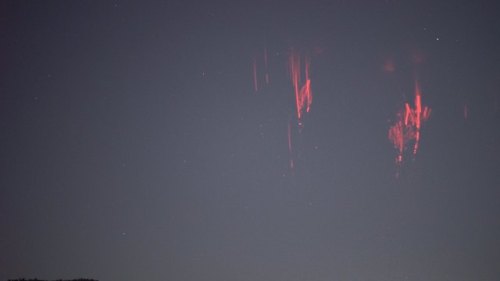
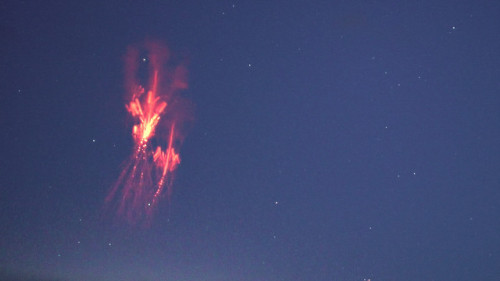
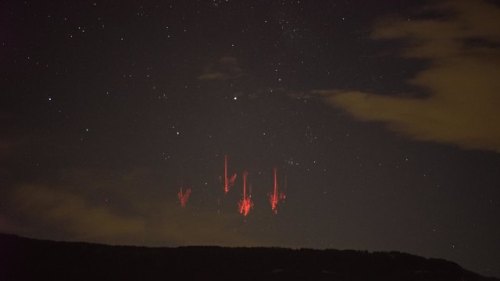
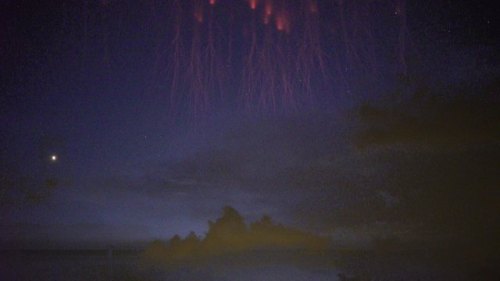
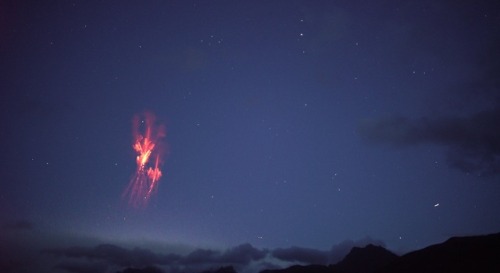
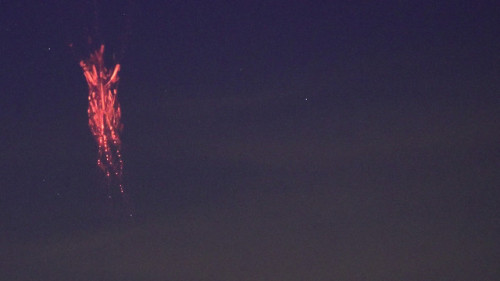
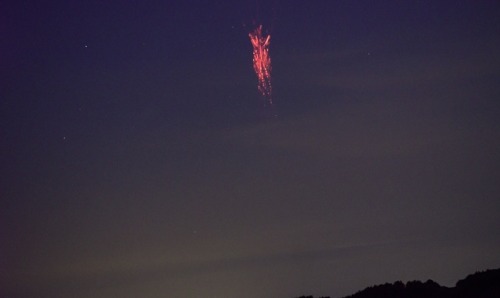
Sprite (lightning)
Sprites or red sprites are large-scale electrical discharges that occur high above thunderstorm clouds, or cumulonimbus, giving rise to a quite varied range of visual shapes flickering in the night sky. They are usually triggered by the discharges of positive lightning between an underlying thundercloud and the ground.
Sprites appear as luminous reddish-orange flashes. They often occur in clusters above the troposphere at an altitude range of 50–90 km (31–56 mi). Sporadic visual reports of sprites go back at least to 1886, but they were first photographed on July 6, 1989 by scientists from the University of Minnesota and have subsequently been captured in video recordings many thousands of times.
Sprites are sometimes inaccurately called upper-atmospheric lightning. However, sprites are cold plasma phenomena that lack the hot channel temperatures of tropospheric lightning, so they are more akin to fluorescent tube discharges than to lightning discharges. source, images
More Posts from Jmsconn and Others

The Big Dipper
by: VegaStar Carpentier
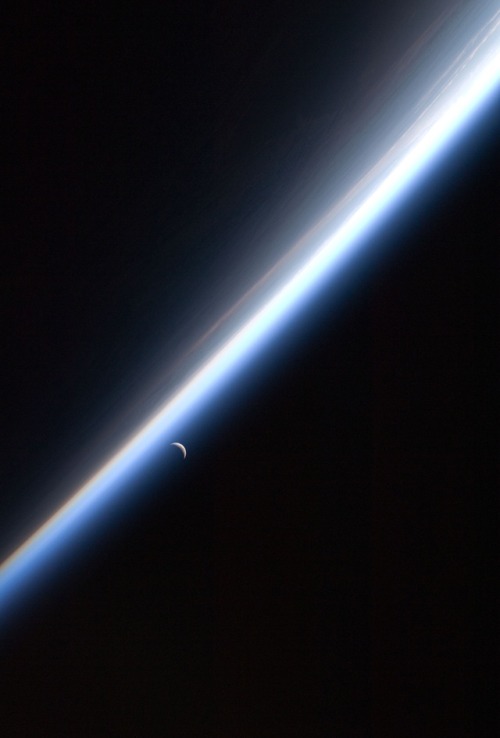
Crescent Moon and Earth’s Atmosphere Seen by International Space Station
Credit: NASA
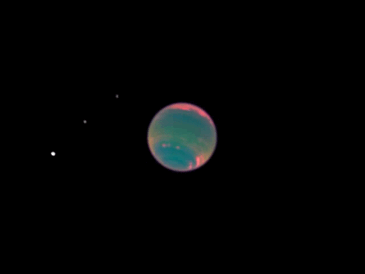
Neptune and its moons (Proteus, Larissa, Despina and Galatea)
Credit: NASA / Hubble (infrared)




Total Solar Eclipse, 2019. Credits: ESA/CESAR

Wide-Field Ellipse
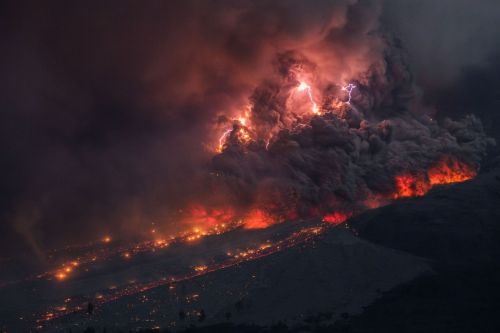
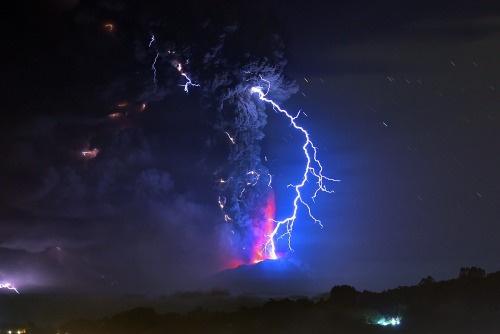
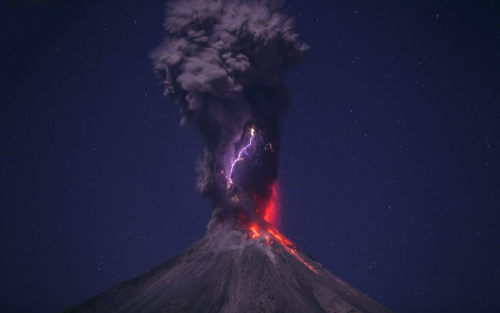
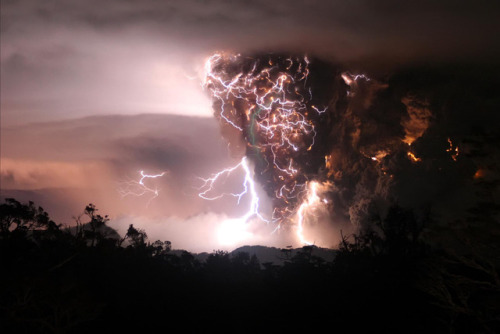
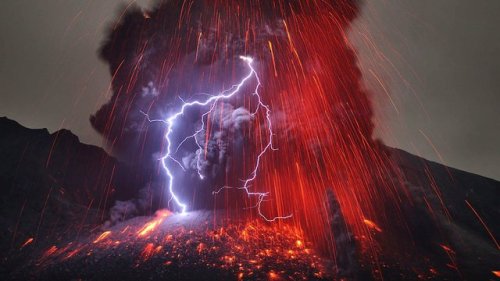
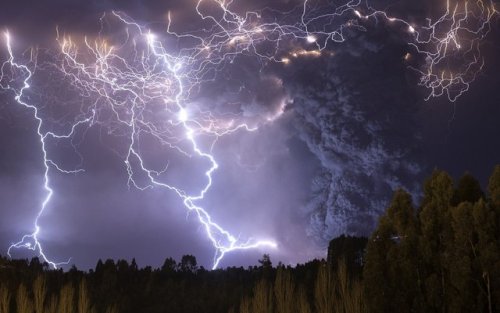
Dirty thunderstorm
A dirty thunderstorm (also volcanic lightning, thunder volcano) is a weather phenomenon that is related to the production of lightning in a volcanic plume.
A study in the journal Science indicated that electrical charges are generated when rock fragments, ash, and ice particles in a volcanic plume collide and produce static charges, just as ice particles collide in regular thunderstorms.
Volcanic eruptions are sometimes accompanied by flashes of lightning. However, this lightning doesn’t descend from storm clouds in the sky. It is generated within the ash cloud spewing from the volcano, in a process called charge separation.
source
images







Satellites source

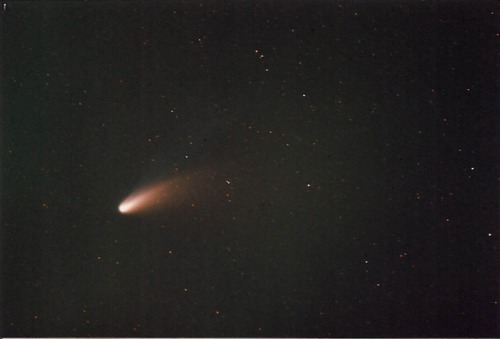
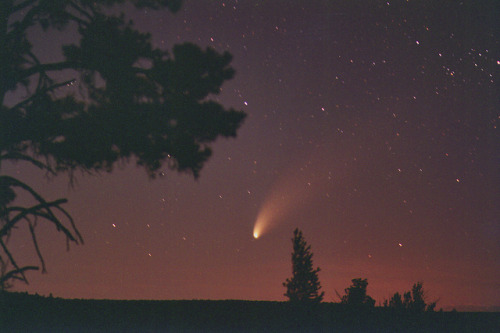
Comet Hale-Bopp
images: x, x

Cassini mosaic of Iapetus, showing the bright trailing hemisphere with part of the dark area appearing on the right (the equatorial ridge is in profile on the right limb). The large crater Engelier is near the bottom; to its lower right can be seen the rim of a partly obliterated, slightly smaller older crater, Gerin.
This false-color mosaic shows the entire hemisphere of Iapetus (1,468 kilometers, or 912 miles across) visible from Cassini on the outbound leg of its encounter with the two-toned moon in Sept. 2007.
Credit: NASA/JPL
#cassini #iapetus #japeto #satellite #moon #lua #saturno #saturn #astronomy #astronomia https://www.instagram.com/p/B0kBRIHg3pQ/?igshid=meuno7r2ifg8
-
 xingnirigali liked this · 1 year ago
xingnirigali liked this · 1 year ago -
 lenssmurabanlo liked this · 1 year ago
lenssmurabanlo liked this · 1 year ago -
 fohatic liked this · 1 year ago
fohatic liked this · 1 year ago -
 ipswitch4664 liked this · 2 years ago
ipswitch4664 liked this · 2 years ago -
 susidark liked this · 2 years ago
susidark liked this · 2 years ago -
 john-erby liked this · 3 years ago
john-erby liked this · 3 years ago -
 hikingguatemala502kevin liked this · 3 years ago
hikingguatemala502kevin liked this · 3 years ago -
 squidrolls360 liked this · 3 years ago
squidrolls360 liked this · 3 years ago -
 venus-born liked this · 3 years ago
venus-born liked this · 3 years ago -
 electranavy liked this · 3 years ago
electranavy liked this · 3 years ago -
 thathrillainvanilla liked this · 3 years ago
thathrillainvanilla liked this · 3 years ago -
 plantbum reblogged this · 4 years ago
plantbum reblogged this · 4 years ago -
 ou-ki reblogged this · 4 years ago
ou-ki reblogged this · 4 years ago -
 ou-ki liked this · 4 years ago
ou-ki liked this · 4 years ago -
 anqeliks liked this · 4 years ago
anqeliks liked this · 4 years ago -
 vrgnlvrs reblogged this · 4 years ago
vrgnlvrs reblogged this · 4 years ago -
 antathjn liked this · 4 years ago
antathjn liked this · 4 years ago
